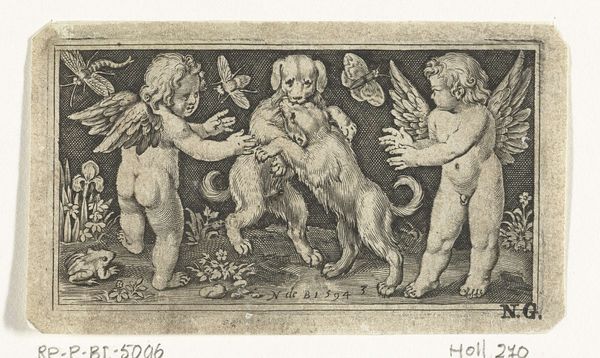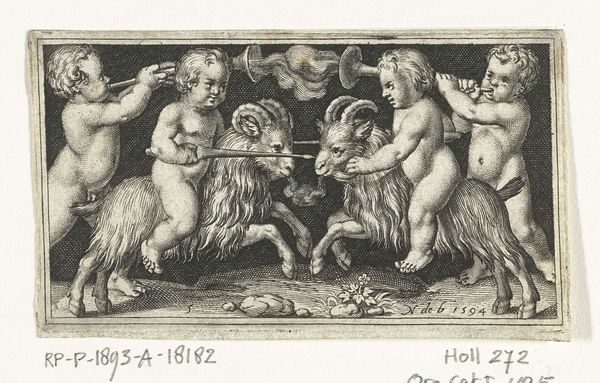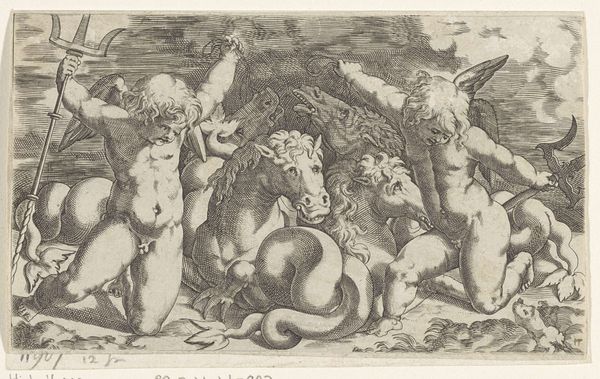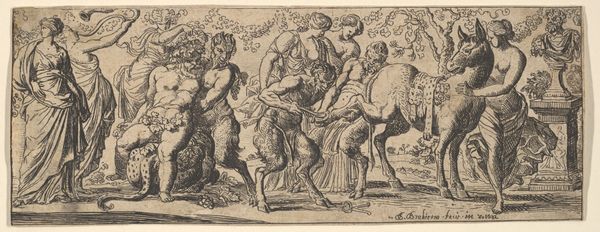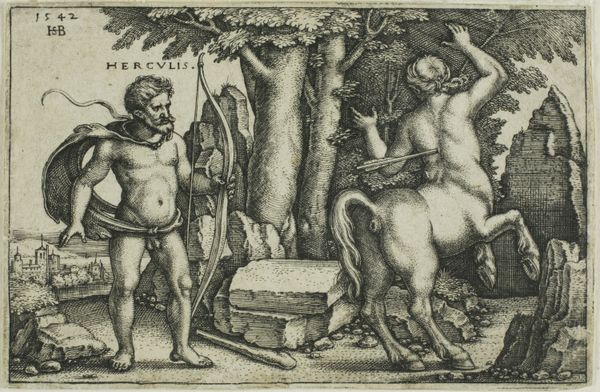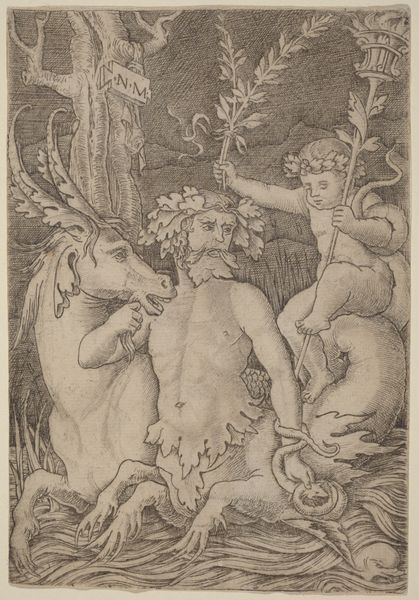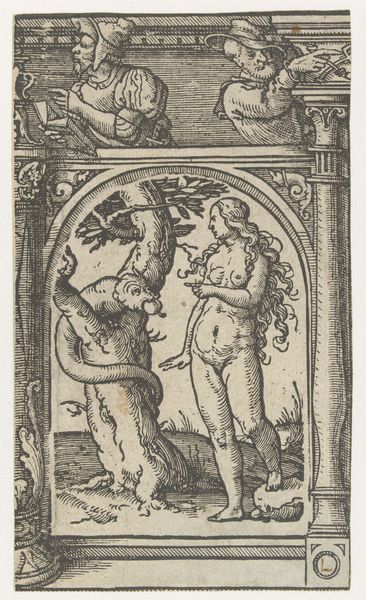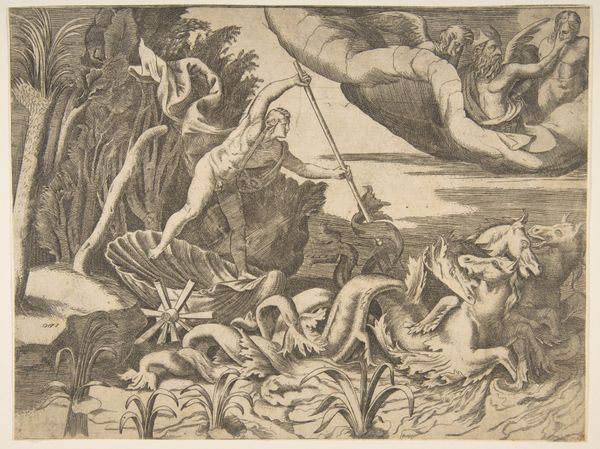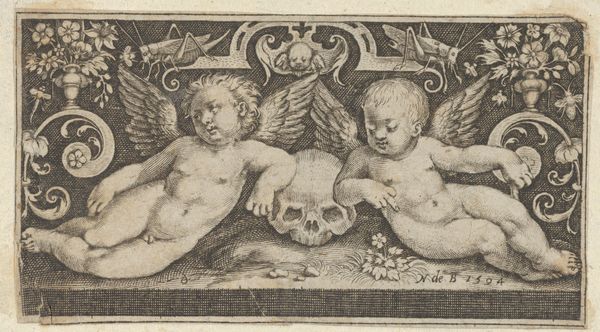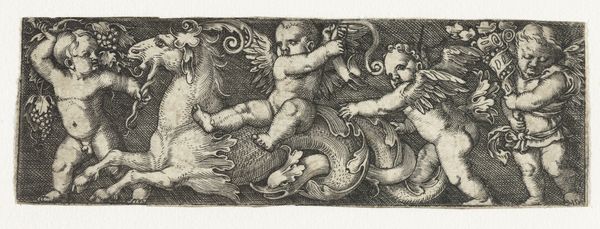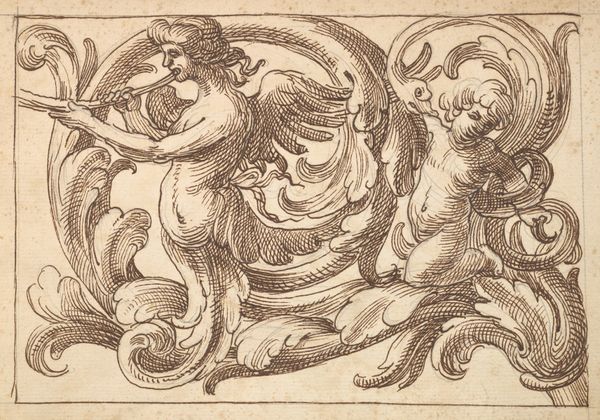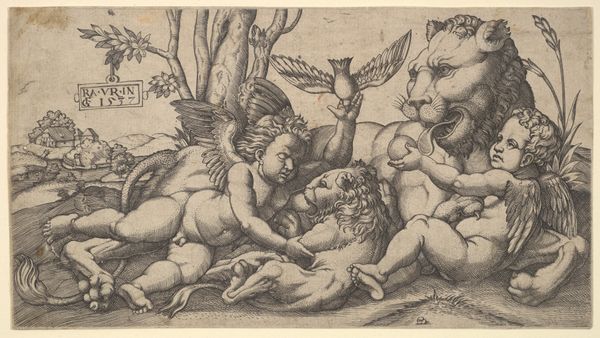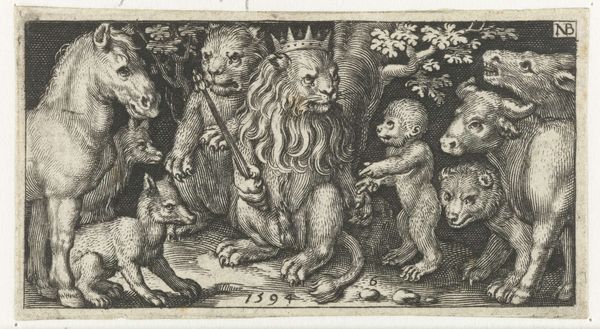
Fries. Twee vechtende kinderen, rijdend op bokken, geflankeerd door twee kinderen die op een bazuin blazen 1594
0:00
0:00
#
pencil drawn
#
toned paper
#
light pencil work
#
pen sketch
#
pencil sketch
#
old engraving style
#
pen-ink sketch
#
pen work
#
watercolour illustration
#
pencil art
Dimensions: height 48 mm, width 85 mm
Copyright: Rijks Museum: Open Domain
Nicolaes de Bruyn made this tiny engraving of fighting children in 1594. It presents a scene of infantile aggression and boasts its own internal fanfare. In Northern Europe at this time, the family was being reinvented as a central institution. Protestant reformers emphasized the role of parents in the moral and religious instruction of their children. But images like this remind us that the reality of family life could be less than edifying. De Bruyn has framed the chaos of childhood combat within the visual codes of classical art; note the stylized acanthus leaves and the frieze-like composition. Is this just a bit of fun? Or is it a comment on the staging of childhood, and the way its unruly realities are so often obscured by the formal conventions of art? Social historians make use of a wide variety of sources to better understand this period: conduct manuals, domestic inventories, parish records and, of course, the images themselves. All help to reveal the shifting social norms of early modern Europe.
Comments
No comments
Be the first to comment and join the conversation on the ultimate creative platform.
